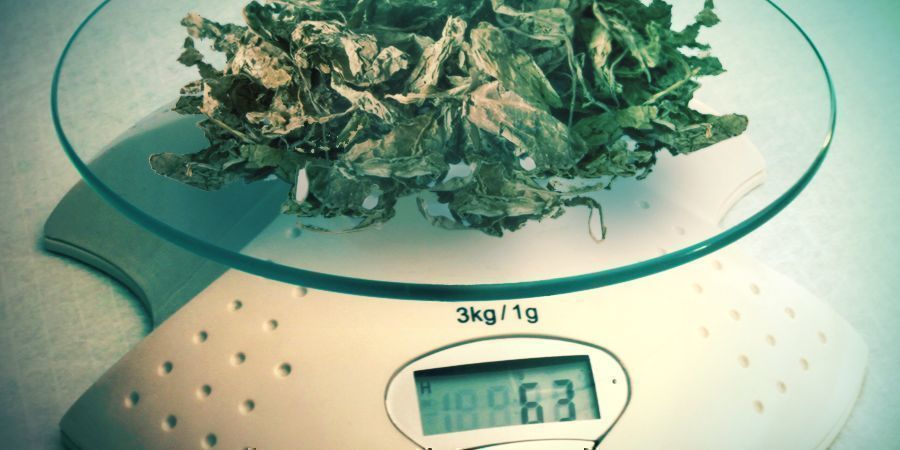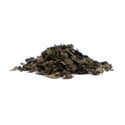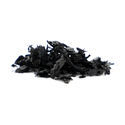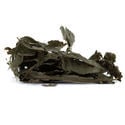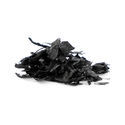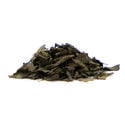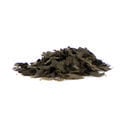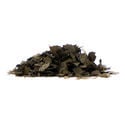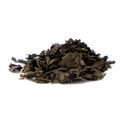Salvia: Everything You Need To Know

What Is Salvia divinorum?
Salvia divinorum is a psychoactive drug like no other. This powerful, psychedelic plant is native to the moisture-rich cloud forests of Mexico and belongs to the sage genus. In fact, “Salvia divinorum” translates roughly to “Diviner's Sage,” highlighting the drug’s spiritual characteristics and importance to native communities of Mexico. Of the many Salvia species, only Salvia divinorum contains the active compound Salvinorin A, which is responsible for inducing psychological effects.
What is fascinating about Salvia in regard to other psychoactives, is how different its properties are from drugs like mushrooms and LSD. Whereas many psychoactive compounds are classified as alkaloids, Salvinorin A is a pure chemical that induces intense, sometimes frightening effects in the smallest of measured doses. Salvinorin A acts on different opioid receptors than other psychedelics, which positions it in a league of its own. In a word, Salvia is potent and should be respected as such.
Shamanic and Cultural History of Salvia divinorum
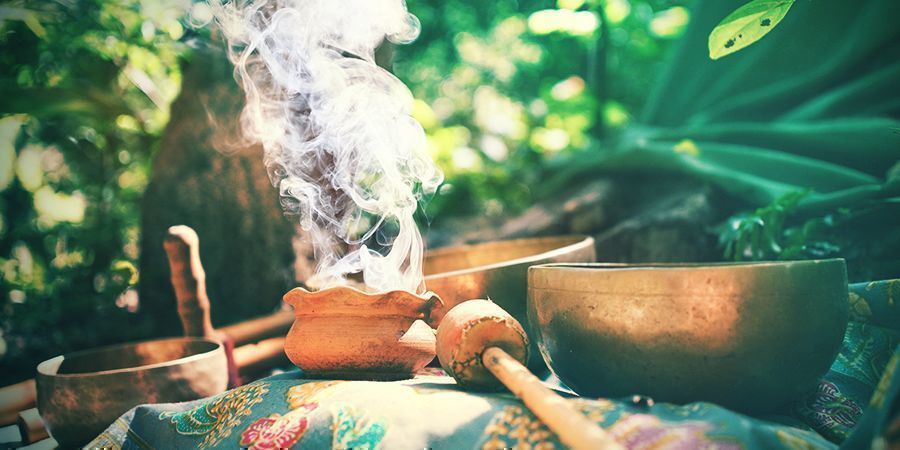
Salvia divinorum comes from the remote regions of the Sierra Mazateca mountains of South America. Among the indians that live in this region, Salvia divinorum is considered a sacred plant that has been used in shamanic rituals.
Maria Sabina, the best known Mazatec curandera or shaman, dedicated her life to the healing work with psilocybin mushrooms and Salvia divinorum. She once famously remarked that when the mushrooms are not available, she resorts to the use of salvia. She noted that salvia doesn’t have as much strength as the mushrooms, but that could also have been due to the fact that she prepared an infusion with the leaves. While a salvia tea produces psychoactive effects, it is not nearly as strong as the quid method, for example.
Although it is theorized that Salvia has been used for centuries, it was not “discovered” by the Western world until the famous ethnobotanist, R. Gordon Wasson researched the psychoactive nature of the plant. R. Gordon Wasson is most notably the botanist who introduced psilocybin containing mushrooms to the West.
But also among the native Mazatec the discovery of salvia could possibly have been a rather recent event. What points to this is that the Mazatecs do not actually have a native name for the plant, and refer to it as “hojas de María Pastora”, translating into “leaves of Mary the shepherdess”. It is still not entirely clear, how far back the use of salvia among the native tribes goes. Since the plant is endemic only to a small region of Mexico, it could have well been missed by many indians. And those who lived in the area might have lost knowledge about it during the turbulent times of the spanish invasion. It remains a mystery whether the plant was without name only for the generation that Wasson encountered, or if the psychoactive powers of the plant indeed were unknown to previous generation as well.
As a result of this, Wasson went onto suggest that salvia could possibly be what the Aztecs called “Pipiltzintzintli” – meaning “purest little prince”. This was referenced in a 17th century writing, and would help explain the potential origins of the plant; however, many believe this old reference to be cannabis, and not salvia.
In Western society, research into Salvia did not start until the 1930’s, where it was described by Jean Basset Johnson as he was researching the Mexican use of psychedelics. Johnson described the leaves of the plant as being used as part of psychedelic rituals. This led to Wasson conducting further research into the plant in the 1950’s, when he confirmed that it contained psychedelic properties. In a collaboration with Albert Hoffman (the inventor of LSD), and Robert G. Weitlaner, a living sample of saliva was brought back to the West for study and classification in the early 60’s.
The pharmacological side of the plant remained somewhat clouded until the 90’s when Daniel Siebert began research into the plant again. Since then, the main active compound of saliva - Salvinorin A - has been identified, although there is still much to be discovered about the plant.
EFFECTS OF SALVIA DIVINORUM
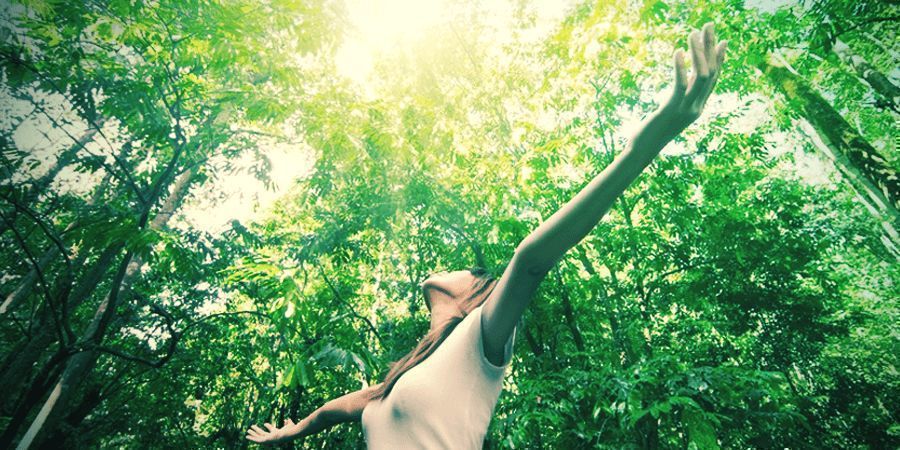
The effects of Salvia divinorum cannot be overstated, especially for new users. Even those with experience smoking cannabis or consuming other psychedelics will note the singular power of this recreational drug.
The effects of Salvia divinorum are categorised by the “Salvia Experiential Scale” which rates the experience on a spectrum from least intense to most, corresponding to each letter of the word “Salvia”. They increase as follows: (S)ubtle Effects, (A)ltered Perception, (L)ight Visionary State, (V)ivid Visionary State, (I)mmaterial Existence, Amnesic Effects. Be warned that the differences between Subtle and Amnesic effects are significant, as maximum effects can cause total dissociation in some users.
The Salvia Experiential Scale
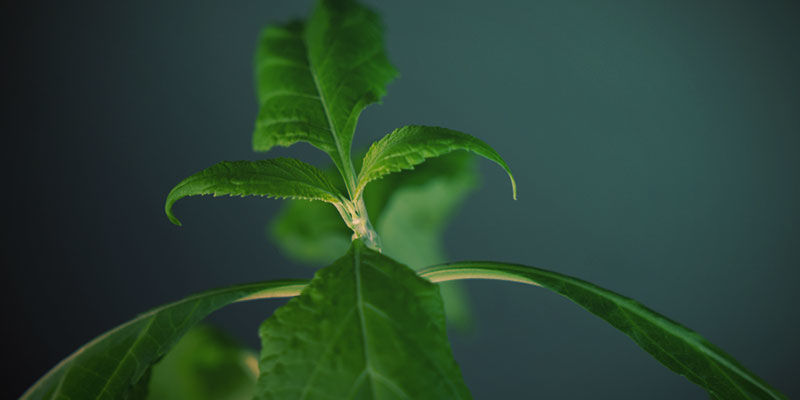
The Salvia Experiential is a six level scale designed to let users rate the intensity of their Salvia trip. The six letters of the acronym S.A.L.V.I.A. correspond to ascending levels of intensity, one through six.
Level 1: Subtle Effects
Just like a “subtle” tap on the shoulder or a “subtle” noise in the background, Salvia trips reaching only the S level are just noticeable but relatively as mild as it can get. The feeling of a level one Salvia trip could be similar to the feeling you get from relaxed, deep breathing, or perhaps very focused.
Level 2: Altered Perception
At this point thought patterns and sensory details are distinctly different from normal. Music can sound richer and fuller, and a person at level two might be able to distinguish details of colors and textures with ease. The “aura” of the space around the user might seem different, maybe larger or smaller, and slight effects on memory can be apparent. This level is akin to a normal marijuana buzz.
Level 3: Light Visionary State
As the level’s name suggests, a person tripping at level three experiences light visions, aural and visual. These can be similar to the “mini-hallucinations” that are created by hypnagogic imagery, experienced by everyone before sleep. Common visuals are pulsating or repeating geometric designs, fractal patterns, lattices, and other abstract combinations of colors and shape, in addition to people and objects when nearing level four. Users at level three have a firm grasp on themselves and their reality, experiencing these visions as just passing imagery.
Level 4: Vivid Visionary State
A person at level four gets the same kind of visual and auditory experiences as a person in level three, but they are fuller, more concrete, and longer lasting. Instead of two dimensional designs and shapes, scenes and 3 dimensional visuals can occur with the eyes closed, and when focused on without distractions these scenes can expand to fill the user’s conscious state. As if one is “entering” the dream that you saw in level three, level four experiences can become complex and coherent enough to follow story lines and explore hallucinatory landscapes.
Not uncommon are journeys to other dimensions, meetings with aliens or other complex life forms, visions of animals and insects (people have reported feeling a transformation into a different animal species), and outlandish & colorful landscapes. At this stage, a user should make the decision to sit back, relax, dim the lights, and close their eyes, allowing the closed-eye visuals to take their form and guide you into the world of Salvia.
Level 5: Immaterial Existence
As a user progresses through the stages of intensity during a Salvia trip, his trip “environment” (the world he is hallucinating) becomes stronger and more solid as the sensory environment and the old reality slip away. The point where the trip environment begins to become so strong that it overpowers both the sensory environment and even the consciousness is level five.
Though a user will still be able to think to themselves and remain aware of their own consciousness at level five, the world around them is entirely out of their hands, turned into an ever-changing projection of your subconscious thoughts and feelings, building a dream world that eliminates any possibility of an outside world. People at this level will experience talks with themselves or divine beings, conscious-altering thoughts and states, and a lack of center control of thought. Some people lose complete awareness of their physical body and the physical world at this level.
Ego loss, or loss of awareness of self, is nearing, causing people to experience “merging” and become “one” with other objects or people in their world. If a user reaches this level, on purpose or by accident, without a tripsitter, they will be in for some deep trouble. A complete lack of awareness combined with blind stumbling can result in countless injuries. Any interaction with people on the outside world is entirely out the window. When properly reached, however, this level is seen as a goal among Salvia users.
Level 6: Amnesic effects
Level six, the last and highest level, is the point at which total ego loss occurs, and with it the memory of the experience may be entirely lost afterwards. On the outside, the user might show strange facial expressions, utter incomprehensible words & noises, bang, trash around, topple over, or even sit perfectly still and silent. On the inside, the user is not at all aware that they are on a Salvia trip or even of who they are.
Tripsitters need to be extra alert when dealing with a person at level six, especially because the person can easily hurt or injure themselves without having a clue they did it or feeling any pain. At the same time, keeping a record of the events might be helpful in the future, since most times a user can’t remember the experience after it happened (if they were even aware during it). Since memory of the trip is lost and the trip isn’t considered enjoyable, most users, even heavy users, try to stick to level 5 as a maximum satisfactory trip.
Salvia And Ego Loss
When a Salvia user is in a relaxed and calm environment with few distractions, he/she can reach a state of near “ego loss,” or a so-called divine state of selflessness. The plant’s use by humans has been documented for hundreds of years, and our history with it probably dates back even further. It’s commonly used in religious and spiritual events, such as ceremonies or enlightenment walks, and was a key part of the culture of the Mazatec Native Americans of present day Oaxaca, Mexico. Its enriched history gave it its scientific name, which in translation means sage of the Diviners.
SIDE EFFECTS OF SALVIA

In general, Salvia produces minimal side effects other than those associated with the high. Salvia doesn’t encourage significant after effects, making it a safe drug to use as long as users are supervised by sober friends, better known as “trip sitters.”
The trip sitter is especially important since the real dangers associated with Salvia are the user’s drug-induced inhibitions and subsequent physical confusion. While there are no cases of terminal overdoses to Salvia divinorum, there have been cases of individuals becoming aggressive and harming themselves or others (often by accident) while high.
While under the intoxication of Salvia, users should not have access to nearby guns, knives and other sharp objects or machinery that could cause harm to anyone. While most individuals on Salvia don’t pose a threat, it’s better to be safe than sorry!
HOW TO USE & DOSE SALVIA DIVINORUM
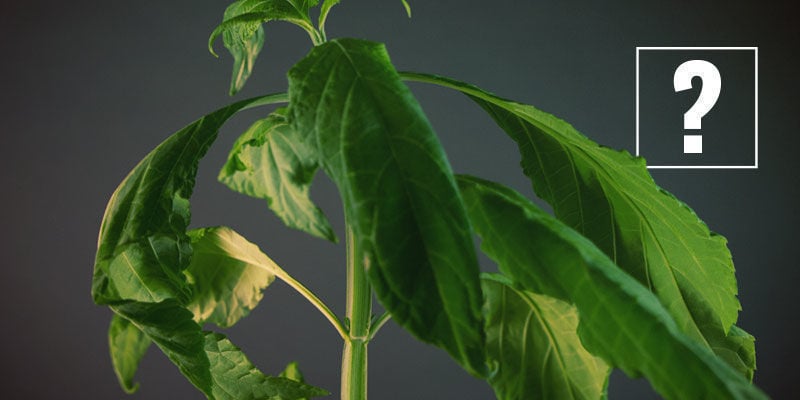
There are a number of different methods for consuming Salvia of varying efficacies, including tinctures, extracts and oral intake. Salvia extracts are highly concentrated and even more potent than dried leaves. It’s advised that consumers measure their doses out - it’s that strong! Tinctures are used less, due to their inaccessibility. Consumers can also chew on Salvia leaves to experience the effects if they choose.
TAKING SALVIA ORALLY - SALVIA QUID
Quids are small clumps of rolled and compressed Salvia, shaped into balls or cylinders. Quids are chewed – very slowly, a chew every several seconds – and they send the active chemical of Salvia through the gums. After half an hour of chewing the effects can already be present, and the quid is then spat and discarded, leaving its Salvia-saturated juice on your tongue and gums. If you’re chewing a quid, try to keep that juice in until the half hour of chewing is over. Quid chewers keep a bowl, pot, or towel handy to spit chewed quids into – the juice can deeply stain clothes and other cloth. Don’t tip that bowl over!
Making quids is straightforward. Either freshly harvested, moist leaves or dry Salvia leaves can be rolled into quids, resulting in slightly different quids. Dry leaf quids have a sweeter, less bitter flavor. Ideally, every quid maker would have a gram scale, but if not, he/she can count out around 8 to 20 large, whole dried leaves, or about 3 to 8 grams of dried leaves. These leaves should be soaked in cool water for several minutes, removed, squeezed until no water drips, and then rolled or balled up. The final product is a quid.
To even further simplify the process, it’s possible to simply roll or ball up dry Salvia leaves, but taste and texture are greatly sacrificed. Some people even flavor their quids with ingredients like sugar, honey, syrup, Stevia extract, etc. Flavored quids are much less bitter and much more enjoyable to chew and savor.
THE MAZATEC METHOD
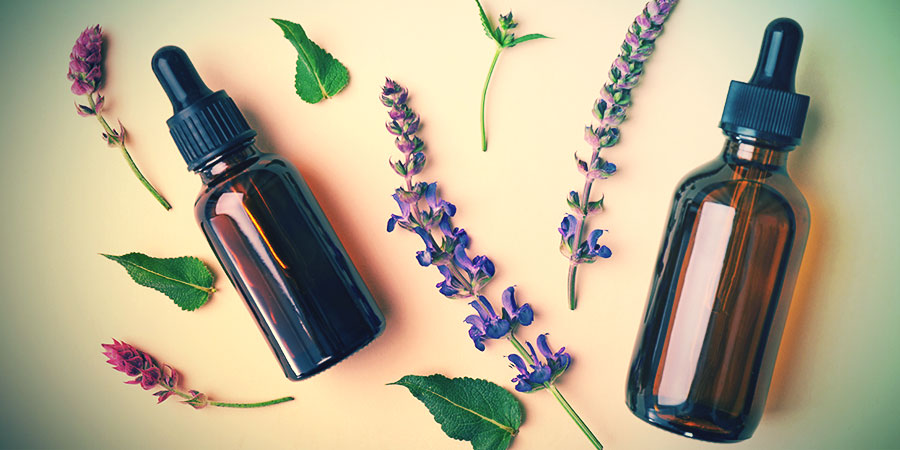
In traditional Mazatec ceremonies, the leaves were ground into a fine pulp, which was then infused into a liquid for consumption. This method prolongs the effects of the Salvia past what most recreational users are looking for in the experience.
The first Mazatec method
The Mazatec method of taking Salvia is a traditional method with historical roots. It’s safe and reliable, but takes up more leaves and raw Salvia plant than other methods.
The first Mazatec variation starts with a large pile of Salvia leaves, which is ground up and mushed into a pulp that can be purified into a liquid drink. The drink reportedly tastes extremely strange (not in a good way), and the ingestion wastes a lot of Salvinorin A per leaf (the chemical doesn’t absorb well into the bloodstream through the lining of the stomach), so people who aren’t in the Mazatec culture don’t go by this method too often; but, the experience is full and extremely long lasting.
When the Mazatec method was first used, it was carried out as a spiritual ceremony inside a dimly lit room, with a tripsitter watching over the ones who were about to trip and expand their minds.
The second Mazatec method
The second is, in a nutshell, simply eating Salvia leaves. The user chews the leaf thoroughly for a period of time, grinding out the Salvinorin A and allowing it to absorb through their tongue & mouth’s membranes before they swallow the leaves. The second Mazatec method is still less potent per leaf volume than a quid, talked about more later. Salvia leaves are also bitter and tough, making them difficult to get down your throat and swallow. The two Mazatec methods have their perks, but overall, they are definitely not the choice of most regular Salvia users.
Get More Out Of Your Salvia Quid

To give the effect of your quid an extra boost, you can prepare your mouth to more readily absorb and deliver Salvia’s active ingredient. Items you’ll need are an everyday toothbrush and a brand of mouthwash that has alcohol or menthol in it (like Listerine Cool Mint, Crest Mint, etc.).
First use the toothbrush to softly scrub around in the inside of your mouth, reaching the crevices and cleaning the parts under your tongue (where a lot of absorption happens). Then rinse and gargle with your mouthwash of choice, making sure to keep it in your mouth for at least 30 seconds (you should anyway). Get the mouthwash everywhere as well. When the time’s up, spit, and all the dead skin cells and particles in your mouth will rinse out with it.
Generally, effects of the quid come on around 10 to 15 minutes after the first chew. Newcomers: don’t be misled by the onset just because it is slow; Salvia is a strong psychoactive and quids last longer than inhaled Salvia.
The quid stone peaks at around the time you spit it out, and plateau there for a good hour, before tapering off. The entire experience of chewing a quid is relatively short from first chew to baseline, but it can always change from person to person.
What To Expect With Salvia
Using small amounts of salvia leaves brings on a calm, glowing, slightly psychedelic experience, akin to marijuana. However, large doses and concentrated extracts disconnect the user from his reality completely, taking them into a hallucinatory world of their own, even creating and erasing thoughts and feelings inside the user during the duration of the trip. Strength of trips always change from person to person.
Salvia is distinctly a different trip from psychedelics and traditional recreational drugs. It also has other distinct differences.
THE SENSATIONAL FEELING OF A SALVIA TRIP
If the Salvia is instead chewed, such as in a quid, both the onset and the plateau are prolonged. Sensation starts to become apparent around a quarter of an hour after the first chew, and the experience hits its plateau about half an hour in. The plateau holds for another half hour to an hour, before descending in around the same time.
Salvia tinctures are usually similar to chewed Salvia in terms of onset and plateau time, but since tinctures are liquid and are also often created using solvents, the Salvinorin A is more readily absorbed into the mouth, quickening the process slightly. Onset starts 10 to 15 minutes after ingestion and peak 20 to 30 mines in, lasting half an hour to an hour, and taking the same time to descend.
In order to judge and communicate the different levels of Salvia experiences, enthusiasts created the SALVIA Experiential Rating Scale. The scale is made up of six levels of ascending intensity, each corresponding to a letter in the acronym “SALVIA:” Subtle, Altered, Light, Vivid, Immaterial, Amnesic.
Salvia divinorum Safety
Salvia is a an amazingly powerful psychedelic, and although its trips are short, they can be quite intense. Some psychonauts will even go as far as to say that Salvia divinorum is the trippiest of all. With that in mind, it comes as no surprise that you should be well prepared before ingesting Salvia.
When is a tripsitter essential?
Agreed upon by all experienced psychedelic users is the need for an extra, sober person to stick around and take care of a person who is heavily tripping. Having that essential helper, known as a tripsitter or sitter, around is extremely important when one takes strong doses of Salvia or is new to Salvia, just like any other potent psychedelic.
Chewing quids are usually activities that don’t scream for the need of a tripsitter, especially for regular users. But when large doses or strong extracts become involved, the trip reaches a new level, and even the heaviest of Salvia users will still come to a time when they’re glad they had their sitter around (or furious they didn’t). People, of course, still take these forms of Salvia alone. But clear judgement of the situation is key.
What should a tripsitter do, what should they know?
The rule of thumb for tripsitting is to keep a calm head when the person tripping is not. People tripping out may freak out or express strange patterns of emotions that can be scary and disturbing, and the job of the sitter is to judge the situation and keep him/her safe. With salvia, trips always subside quickly. Dialing the police or medics is probably not necessary unless there is a true emergency; instead, in a safe situation, keep the person physically safe and let the trip fade out. In minutes, the person should be approaching baseline again (knowing this can keep you calm and somewhat relieved during intense trips; remember it!).
Experience, with psychedelics in general and particularly Salvia and strong doses of Salvia, will always make a tripsitter more likely to do the right thing at the right time. It’s important to note, however, that when an experienced person may touch or hold a person on heavy pscyhedelics to bring them back to reality, the dissociative effect of Salvia can make this extremely scary for the person tripping, and cause the opposite effect.
What different roles does the tripsitter play?
We like to divide the tripsitter duty into three separate roles: Keeping the person (and others around them, including yourself) physically safe, keeping them emotionally safe, and afterwards, helping them remember the event. The first is the most essential, and should always be the priority of a tripsitter. In fact, physical safety is always the number one priority in all of psychedelic experimentation and, truthfully, any adventurous experiments in life.
Specifically, carefully watch the person and keep their head safe. Don’t let them run off or wander aimlessly into objects; try to get them to sit. Keep them away from anything hot, anything sharp or breakable, any weapons, furniture, walls, and other obstacles, public places, other people, and streets. Don’t push against them, but guide them, with words and soft, slow movement. In an emergency, take any potentially dangerous objects away from the person tripping, slowly, informing them of what you’re doing, and gently loosening their grasp.
If all environmental dangers are taken care of, other factors of safety then come into play. Don’t use physical force to move the person or make them do something, and only guide them if they begin to move about, without forcing them with any sudden or hard movements. Avoid touching them if you can; people tripping on Salvia have been known to mistake touching and physical forcing as an attack or threat (another reason to always keep weapons and dangerous or sharp objects away from trip settings, ALWAYS).
Additionally, a sitter should practically assist in the person’s trip, as long as they don’t intrude on the trip or interfere with the person’s safety. If other people become distracting or they get in a situation where they might need help acting well or getting away from someone, help them out. They’ll thank you for it later.
The second of these roles is the obligation of the tripsitter to help make the trip the best experience in any way possible. Simple emotional reassurance can go a long way during a trip gone wrong, and giving a tripping person soothing, easy to understand phrases to pay attention to can help tremendously. Try making clear to them that they are hallucinating, and that they are physically safe. Tell them who you are, tell them your name, and call them by their name, explaining that they are simply going through a bad trip that won’t last. Sometimes, if the situation calls for it, not speaking can come with positive results as well, depending on the tripping person’s mindset.
Thirdly, once the trip is safe and enjoyable, a memory of the experience is worth nearly as much as the experience itself, and a sitter should protect that memory. There are actually multiple ways to easily and effectively do this. Write down what the person does and says during the trip, clearly and with details so the person can picture their trip later.
A way of revealing the actual experience of the trip is simply asking the person what they are feeling, or where they are, or what they’re doing, and writing that down along with the record of the trip. This is great as long as the person has it together enough to speak and the questioning isn’t intrusive. For both of these, a digital audio or video recorder can be an excellent tool, but use your judgement. Anything you film and record will be available to anyone who can access it.
CAN YOU OVERDOSE ON SALVIA?
There has never been a documented overdose Salvia, and it does not have strong addictive properties whatsoever. Its effects are extremely short, which can be either a pro or con depending on the situation (it also has little negative lingering effects). Lastly, Salvia and its active ingredient are non-controlled in the US and most countries worldwide; it is commonly available at gas stations and smoke shops.
The trip Salvia brings is, one could say, “picky.” Intense noises or visuals, or any distractions whatsoever, will strain the user’s experience; playing a video game or watching sports would be, to many users, a complete waste of time on Salvia. Alternatively they would probably lay in a quiet environment, or sit outside under the night stars, letting the Salvia do its work.
Though it’s technically legal in most nations, driving under the influence of the plant can still get you a DUI, and public use is, as a rule of thumb, always risky. The trip can completely eliminate one’s connection with reality temporarily, and a heavily tripping Salvia user can be incoherent and unpredictable, doing things that would attract attention and sometimes even becoming physically unmanageable. If you’re planning to trip, you NEED to have an extra sober hand around for this reason, among others. If you’re the sober one, make sure the tripping person is safe from their environment and away from any potential dangers.
Salvia is not a party drug!

A lot of recreational drug users don’t get this when first trying Salvia divinorum. You don’t use Salvia at a party, or to chill and have fun.
You use Salvia when you want to open your mind, delve into your thoughts and leave the physical world behind. The plant is a strong psychedelic used by many cultures for vision walks, religious healing rituals, and spiritual enlightenment.
With normal dosage, one can easily experience strong visual and aural hallucinations, and during correct usage (i.e. in a comfortable setting with low light and little distractions, with a few people or one tripsitter/good friend, in a calm, stress-free mindset, perhaps with quiet music playing in the background), the Salvia world can overtake reality, engulfing the user in the trip and playing with all five senses as well as memories and thoughts.
Salvia User Tips & Guidelines

Newbies would do well to listen to these rules.
- NEVER use Salvia in a location where any dangerous objects, including not only guns and knives but also sharp objects and anything else potentially harmful, are nearby.
- NEVER use Salvia and get behind the wheel of a car.
- DO plan out your Salvia trips well in advance, paying attention to the location and time of the event. Pick a place that is safe and private, free of dangers (heights, open flames, use common sense), and free of anything that you could harm or may distract you (no children or pets, and keep work & annoyances away).
- DO plan out an appropriate dosage, and decide beforehand how you are going to ingest the Salvia, whether it be smoking, orally, or something else.
- DO prepare the area before you take your hit, arranging your pipe, lighter, herb, and other equipment well within reach. Have a place to lie down after your hit, and a place to set your pipe.
- DO try not to walk or run around during your trip, instead laying back, relaxing, and allowing the visions to take over and guide you through the Salvia world.
- DO close your eyes – IF you are looking for stronger effects.
- DO, and this is arguably the most important, use with at least one other person who is capable of taking care of you while you trip (This is especially important for large doses are strong ingestion methods, e.g. vaporizer). Take care of others when they’re using Salvia.
Salvia products













 United States
United States



